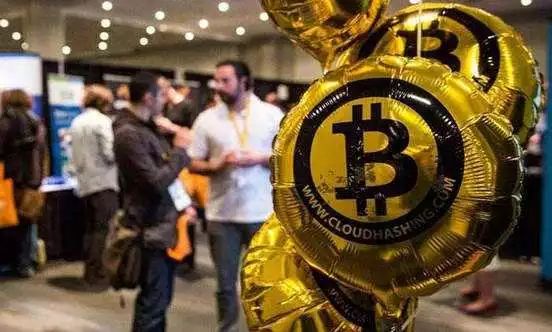
In today's rapidly changing financial markets, every slight fluctuation can trigger widespread attention and in-depth discussion. Recently, the price of the iconic crypto asset Bitcoin has broken the $100,000 mark for the first time, an event that undoubtedly threw a shock bomb into the financial market. While there are multiple factors behind this price surge, none is more notable than the expectation of deregulation under the new Trump administration in the US. After the U.S. presidential election on November 5, the price of bitcoin has risen by more than 40%, and the inflow of funds has been particularly pronounced in the "Trump trade" that reflects the impact of Trump's policies.
First, let's review the specifics of the bitcoin price breaking through the key point of $100,000. According to U.S. information website CoinMarketCap, the price of bitcoin reached the $101,000 range, up about 6 percent from 24 hours ago. While this may seem like a small increase, the amount of money that this increase represents is staggering considering the high value of Bitcoin itself. What is more noteworthy is that this price breakthrough did not happen overnight, but continued to rise on the basis of the eight-month high bitcoin price just after the U.S. presidential election. On November 13, Bitcoin broke the $90,000 mark for the first time, laying a solid foundation for subsequent breakthroughs.
So what are the factors that are driving the price of bitcoin up so rapidly? On the surface, the move is closely related to the change in the selection of the chairman of the Securities and Exchange Commission (SEC). U.S. President-elect Donald Trump on December 4 nominated former SEC Commissioner Paul Atkins to be the next chairman of the SEC. Atkins, known for his repudiation of excessive financial regulation and his support for deregulation, takes a similar stance on virtual currencies. The nomination certainly sends a strong signal to financial markets that the Trump administration may loosen regulations on financial markets, including on crypto assets such as bitcoin.
However, behind this seemingly optimistic expectation, we have to raise a few critical considerations.
First, will deregulation really drive the price of bitcoin higher? While this expectation does have a positive impact on the price of bitcoin in terms of short-term market reaction, in the long run, the lack of regulation could pose a greater risk to financial markets. Crypto assets such as Bitcoin are inherently highly volatile and uncertain, and in the absence of an effective regulatory mechanism, this volatility and uncertainty could be further exacerbated, leading to more severe market turbulence.
Second, does the rise in Bitcoin's price truly reflect an increase in its intrinsic value? From an economic point of view, the price of an asset should match its intrinsic value. However, as the price of bitcoin continues to climb, it is difficult to see any substantial improvement in its intrinsic value. Instead, the rise in Bitcoin prices is more influenced by market sentiment, speculation, and policy expectations. This deviation between price and intrinsic value may not only lead to the emergence of market bubbles, but also pose a threat to the stable development of financial markets.
Third, will the rise in the price of bitcoin have a negative impact on the real economy? While crypto assets such as bitcoin can, to some extent, provide new financing channels and payment methods for the real economy, wild fluctuations in their prices can be a shock to the real economy. For example, when the price of bitcoin rises, it may attract a large amount of money into the crypto asset market, resulting in a shortage of funds in the real economy sector; When the price of bitcoin falls, it may trigger panic selling by investors, further exacerbating market turmoil.
In addition, we should also note that the rise in the price of Bitcoin may also trigger a series of social problems. For example, as the price of Bitcoin soars, more and more people are dabbling in the crypto asset market, which can lead to more people getting caught up in speculation and gambling. At the same time, the anonymity and cross-border nature of crypto assets such as Bitcoin may also facilitate illegal activities, thus posing a threat to social stability.
To sum up, although the rise in the price of bitcoin to a certain extent reflects the market's expectation of the deregulation of the Trump administration, there are many risks and uncertainties hidden behind this expectation. Therefore, in the face of the price fluctuations of crypto assets such as bitcoin, we should remain calm and rational, and conduct a more in-depth and critical analysis from the perspective of the financial market. At the same time, the government and regulators should also strengthen the supervision of the crypto asset market to ensure the stability and development of the financial market.
In financial markets, every opportunity comes with risks and challenges. The rise in the price of bitcoin, while delivering great returns for investors, also reminds us to always be vigilant and cautious. Only by in-depth analysis and understanding of market dynamics can we make informed investment decisions and thus remain invincible in the financial markets. I hope this article can provide some inspiration and thinking for your public number articles.

Recently, the Japanese food industry is undergoing an unprecedented price adjustment.
Recently, the Japanese food industry is undergoing an unpre…
Artificial intelligence has created a device that converts …
China Japan relations have become tense due to erroneous st…
The Federation of German Industries (BDI) has recently issu…
The latest annual report from the United Nations Conference…
On December 4, 2025, the U.S. stock market once again stage…